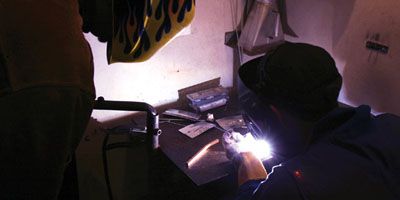
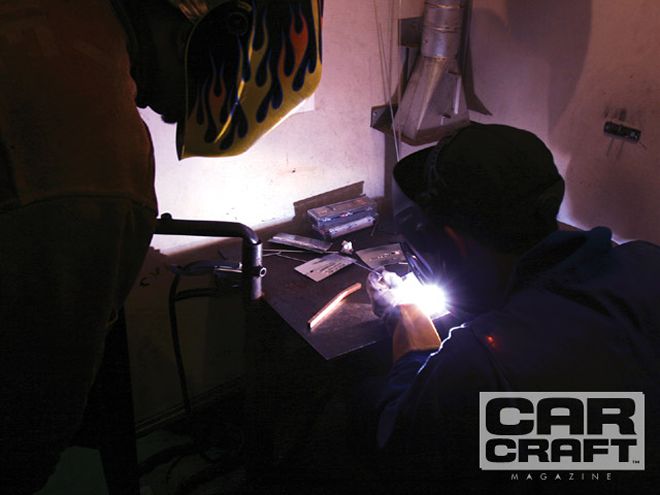 Los Angeles Trade Technical College instructor Ch Chancy oversees student Taylor Nakamura's TIG-welding technique.
Los Angeles Trade Technical College instructor Ch Chancy oversees student Taylor Nakamura's TIG-welding technique.
The process for welding aluminum is essentially the same as that for welding steel, and some guys will tell you aluminum is the easiest metal to weld. But there are a few differences that will really trip you up when working with No. 13 on the periodic table of the elements. Here's a quick rundown of the things you need to know to get started welding aluminum.
We'll be focusing largely on the TIG process, as it's generally the preferred method to use, but you can also use a MIG welder or even an oxyacetylene torch if you have a couple of specialized items specific to aluminum. Los Angeles Trade Technical College instructor Ch Chancy helped us with a lot of the technical bits for this article.
CHE CHANCY'S TOP 10 ROOKIE MISTAKES PROBLEM SOLUTION Parts not cleaned Use a stainless brush. Bad ground Check all connections. Improper torch angle and distance to joint Practice fixes this (lots of practice). Improper stick-out Gained by experience, check online resources. Bad fit-up Jig or clamp parts properly. No experience Never weld on the good stuff until you’ve verified the settings on scrap first. Not filling craters You can’t fix cracks once they’ve started. No rhythm Keep a count in your head. Contaminated tungsten Don’t allow the tungsten to touch the weld puddle of the filler rod. if you do,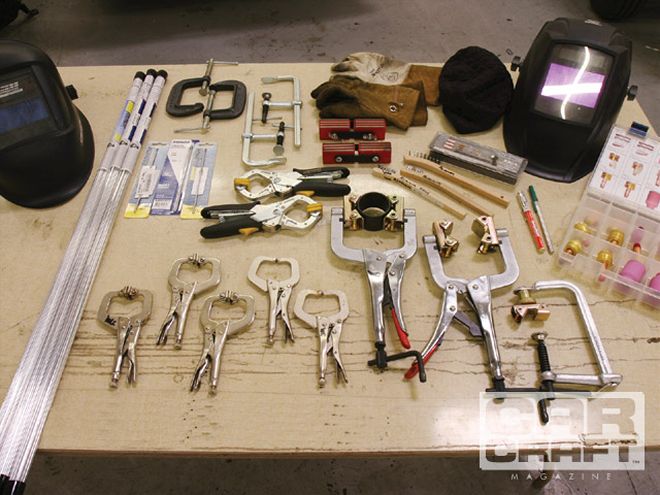
Any welding endeavor requires a substantial initial investment, and the cost of the welding machine can be eclipsed by the cost of the additional equipment and consumables you'll also need before you even switch on your machine. This is a rather modest spread of stuff you'll need for the TIG process: tungsten electrodes, filler rods, a welding helmet with a No. 10 shade, cleaning brushes, gloves, and a variety of clamps and holders.
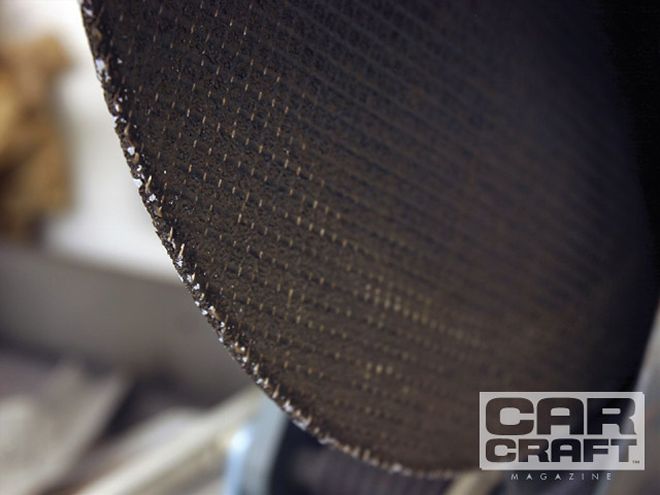
One of the first problems you may encounter is how to properly cut the aluminum. Pure aluminum melts at 1,215 degrees F, but its alloys melt at much lower temperatures, as low as 900 degrees F. That's why cutting with a die grinder or a chop saw is not the best choice-it can get the piece hot enough that it will melt onto and clog up the blade (note the shiny bits on the edge of our chop saw blade).
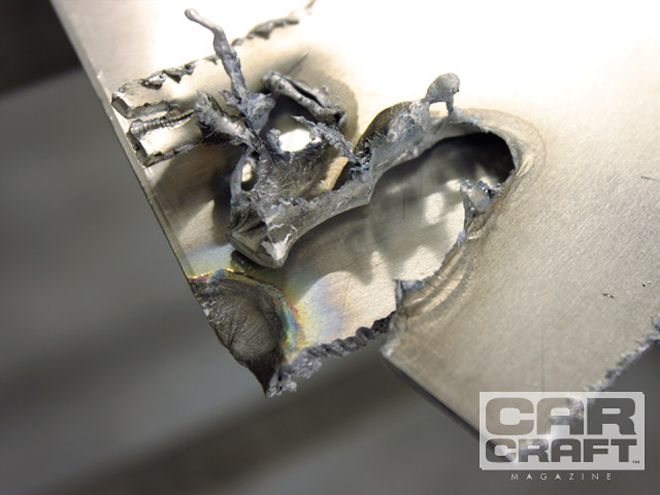
Aluminum, no matter what alloy is used, develops a thick oxide layer when exposed to the atmosphere. If you scratch or grind it off, it will re-form in a few minutes. Unlike rusty steel, aluminum oxide is a good thing-it's a tough skin that protects the aluminum. It is also transparent, and that's why aluminum doesn't need to be painted to protect it from the elements-it is already coated with the oxide layer. Chancy told us this becomes problematic when welding or cutting, though, because the oxide layer melts at about 1,600 degrees F, roughly 30 percent higher than the temperature of the alloy underneath. See in the photo how it looks like the aluminum melted from the inside out? That's exactly what happened.
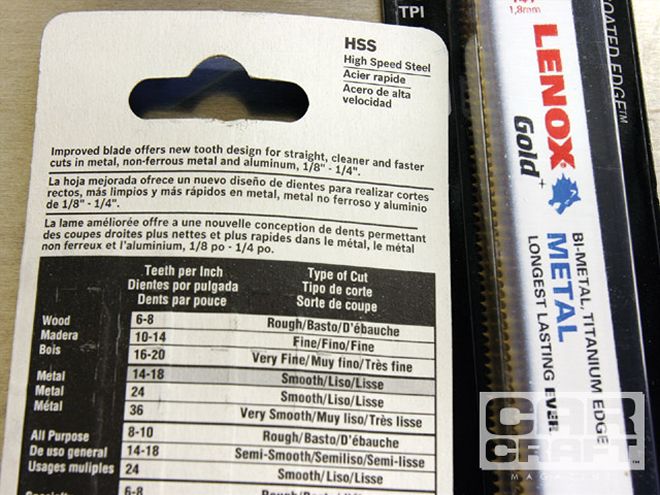
The best way to cut aluminum is to use a saw with a serrated blade-one with teeth that will cut the aluminum in small chunks and put very little heat into the metal. You can buy metal-cutting blades for your chop saw or circular saw, but we made a trip to our local Lowe's and picked up a Skil jigsaw and a couple of packs of metal blades. We grabbed some for our Sawzall, too. The jigsaw blades are small and thin enough to cut shapes and curves. Check out the nice, clean cut made by the jigsaw versus the jagged edge left by the plasma cutter.
A bandsaw or a shear would work great, too, but we don't have either at our shop.
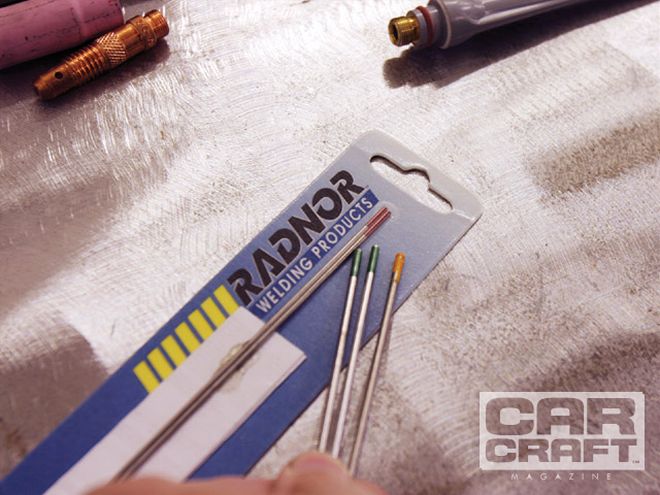
OK, so you've got your pieces cut and you're ready to start welding, but there's still a bunch of things you need to do before you strike an arc. First, you need to select the proper tungsten. Tungsten electrodes are available in several different formulations for welding various materials. Generally, aluminum is best welded with a pure tungsten electrode, indicated with a green band, or with a 2 percent ceriated (orange band) electrode.